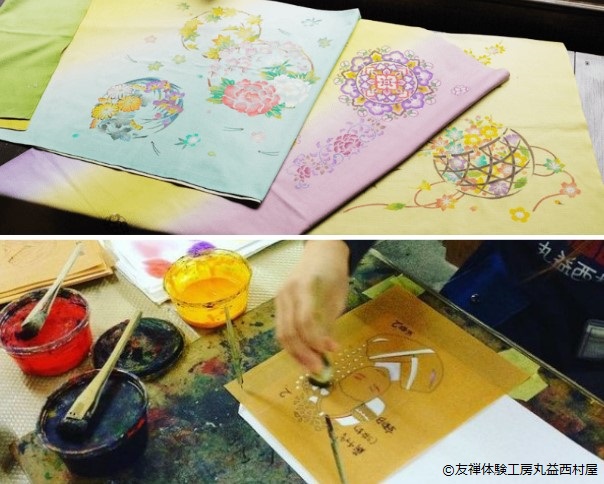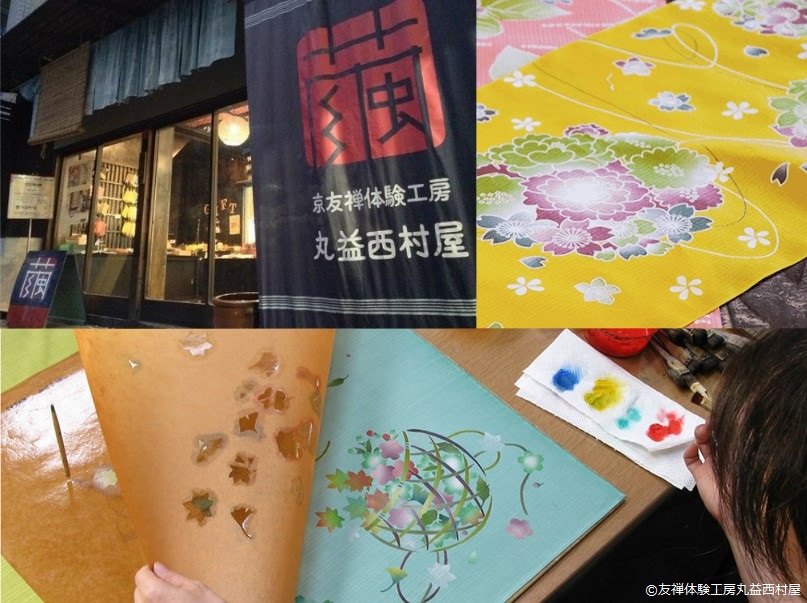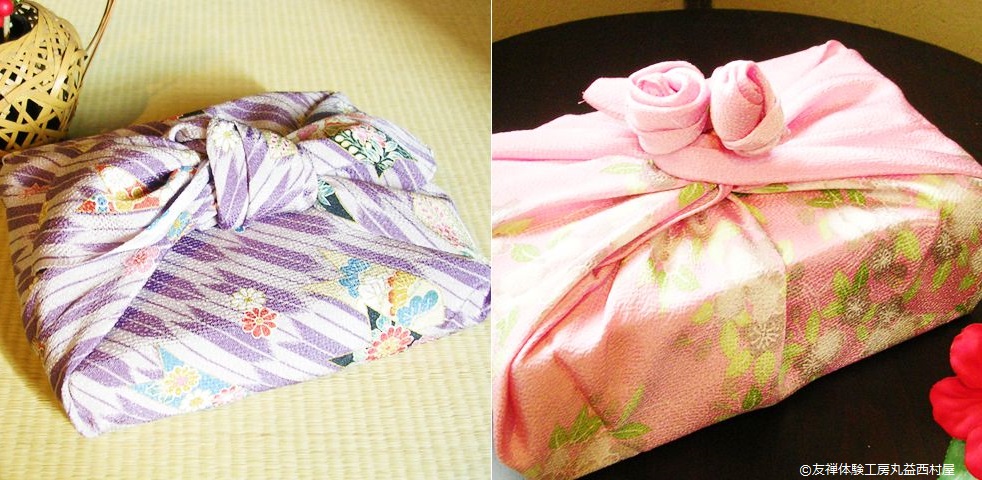-
- USA/Canada 1-800-285-2726
- Australia (02) 8006 4411

Kyo-Yuzen is a dyeing technique that was developed in Kyoto during the middle of the Edo-era towards the end of the 17th century. Until the development of Yuzen dyeing, there were only limited methods for adding color and patterns to cloth. However, with the birth of Kyo-Yuzen, dyeing technology greatly evolved.
Kyo-Yuzen can be broadly divided into two types: "Hand-painted Yuzen" and "Kata-Yuzen".
In Hand-painted Yuzen, the outline of the pattern is drawn on the sketch using thread glue to make precise and thin lines so the dyes around it don’t mix together. This is the most distinctive feature of Yuzen dyeing and is called "Itome-nori", the vividness and beauty of Kyo-Yuzen are due to this technique.
In the introduction of chemical dyes from Europe in the Meiji-era, "Utsushi-Yuzen" has newly emerged. This is now called "Kata-Yuzen". This made it possible to produce more and spread it to large number of people. In Kata-Yuzen, the process is performed using stencils, but sometimes requires as many as 100 stencils to complete one bolt of kimono fabric.
This Kyo-Yuzen’s luxuary, delicate and advanced skills that have been passed down by many craftsmen. Kyo-Yuzen is the crystallization of Japan's proud craftsmanship. Although, fully hand-made Kyo-Yuzen products are incredibly complex to make. Throughout the years, people have made simpler methods so that more people can experience and create their own Kyo-Yuzen products.

Marumasu Nishimuraya is located in Machiya, an old traditional Kyoto townhouse. Once you step into the building, you can sense the history and tradition this place holds. Yoshio Nishimura, a traditional Japanese craftsman, wants to share this technique with others and decided to host workshops where people can experience the traditional dyeing technique themselves. At this studio, we will learn 6 ways of Furoshiki wrapping and dyeing your own Furoshiki.

Furoshiki is a traditional Japanese wrapping cloth and they come in many designs and sizes, and was used widely in the Edo Period. Furoshiki started out as a way for people to wrap and carry their clothes, but later people used it for wrapping others goods. The wrapping of goods in Furoshiki is a sign of respect. It gives the gift more special meaning and very personalized. Using Furoshiki is a very eco-friendly way to help save on plastic bags and paper wrapping, since you can reuse it over and over again. There are so many designs and sizes as well as the wrapping patterns. We will learn 6 beautiful Fusroshiki wrapping at the workshop during our Quilt Tour.
Quilting specialist Mutsuko Yawatagaki's special work shop
Japan's cute and colorful masking tape (Washi tape)
Shibori is the method of dyeing cloths.
Visit local kimono shops and enjoy kimono offcuts shopping
The Birthplace of Japanese Denim
Popular Kyoto Fabric & Craft Shop
The first and sole quilt museum established by Mutsuko Yawatagaki
Kimono Show and Demonstrations.